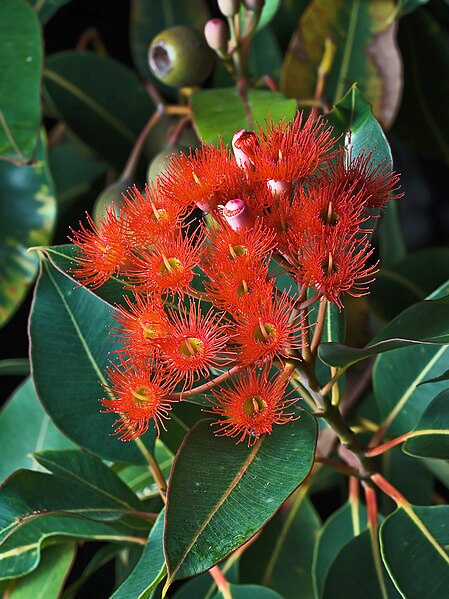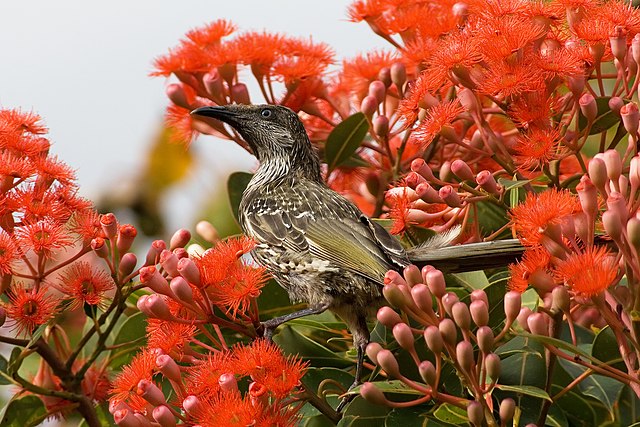Corymbia ficifolia, commonly known as red flowering gum, is a species of small tree that is endemic to the south-west of Western Australia. It has rough, fibrous bark on the trunk and branches, egg-shaped to broadly lance-shape adult leaves, flower buds in groups of seven, bright red, pink or orange flowers and urn-shaped fruit. It has a restricted distribution in the wild but is one of the most commonly planted ornamental eucalypts.
Corymbia ficifolia
Little wattlebird feeding on a flowering specimen
Adult leaves
Buds
A lignotuber is a woody swelling of the root crown possessed by some plants as a protection against destruction of the plant stem, such as by fire. Other woody plants may develop basal burls as a similar survival strategy, often as a response to coppicing or other environmental stressors. However, lignotubers are specifically part of the normal course of development of the plants that possess them, and often develop early on in growth. The crown contains buds from which new stems may sprout, as well as stores of starch that can support a period of growth in the absence of photosynthesis. The term "lignotuber" was coined in 1924 by Australian botanist Leslie R. Kerr.
Lignotuber of Cussonia paniculata partly exposed above ground
Camphor trees at the Vergelegen Estate






